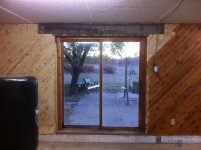harrbca
New member
Hi there everyone,
I have a small tractor ( Massey Ferguson 2400 ) and a couple of atv's that I'll need to do service work on during the long Canadian winter. On my property, I have a 35' x 90' cindercrete/concrete structure that use to be the old residence that I am converting into a workshop/gym/man cave. This structure is an earth shelter about 8' high inside with a concrete slab roof. I am having a 6x7 overhead garage door installed so I can drive the tractor and atv's into it ( and maybe the motorbike so it stays warm and cozy ).
Since I don't feel like dying from carbon monoxide poising, I was wondering what options are out there for venting the exhaust from running engines to the outside? This is only for occasional use ( maybe during warmup while its -40 outside ) or the times when I need to run the engines during servicing.
Thanks for any input you can offer!
I have a small tractor ( Massey Ferguson 2400 ) and a couple of atv's that I'll need to do service work on during the long Canadian winter. On my property, I have a 35' x 90' cindercrete/concrete structure that use to be the old residence that I am converting into a workshop/gym/man cave. This structure is an earth shelter about 8' high inside with a concrete slab roof. I am having a 6x7 overhead garage door installed so I can drive the tractor and atv's into it ( and maybe the motorbike so it stays warm and cozy ).
Since I don't feel like dying from carbon monoxide poising, I was wondering what options are out there for venting the exhaust from running engines to the outside? This is only for occasional use ( maybe during warmup while its -40 outside ) or the times when I need to run the engines during servicing.
Thanks for any input you can offer!
